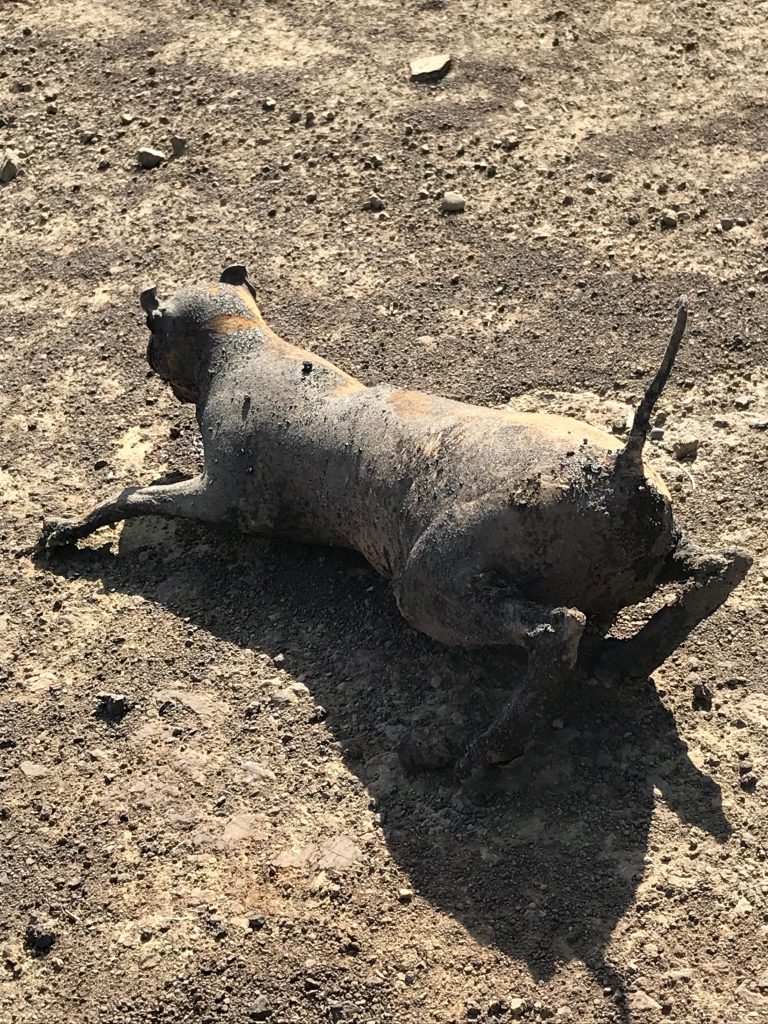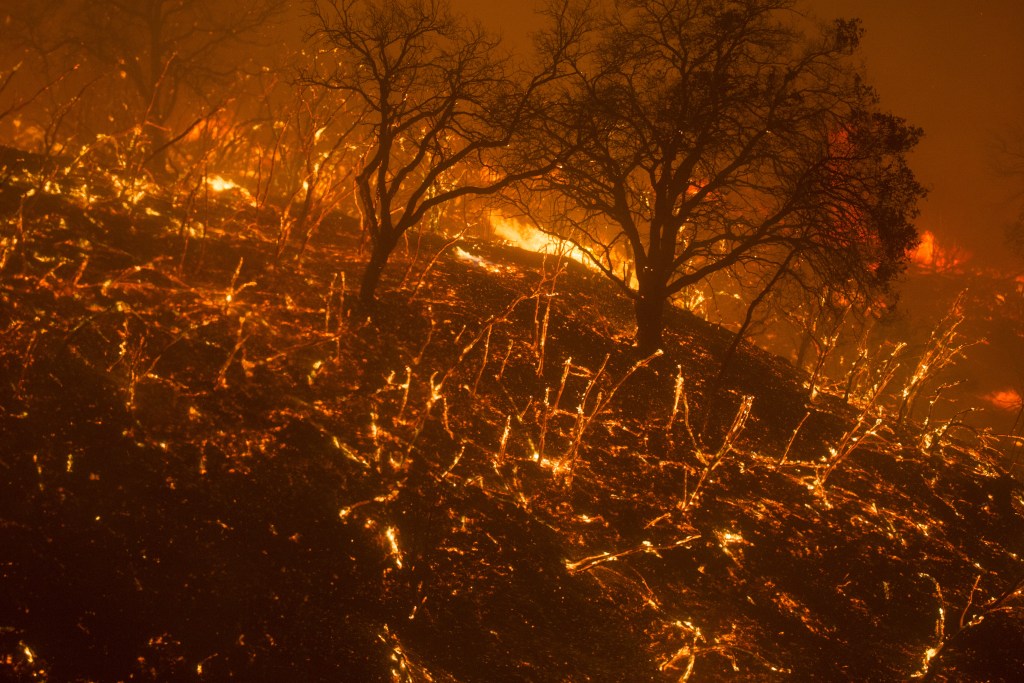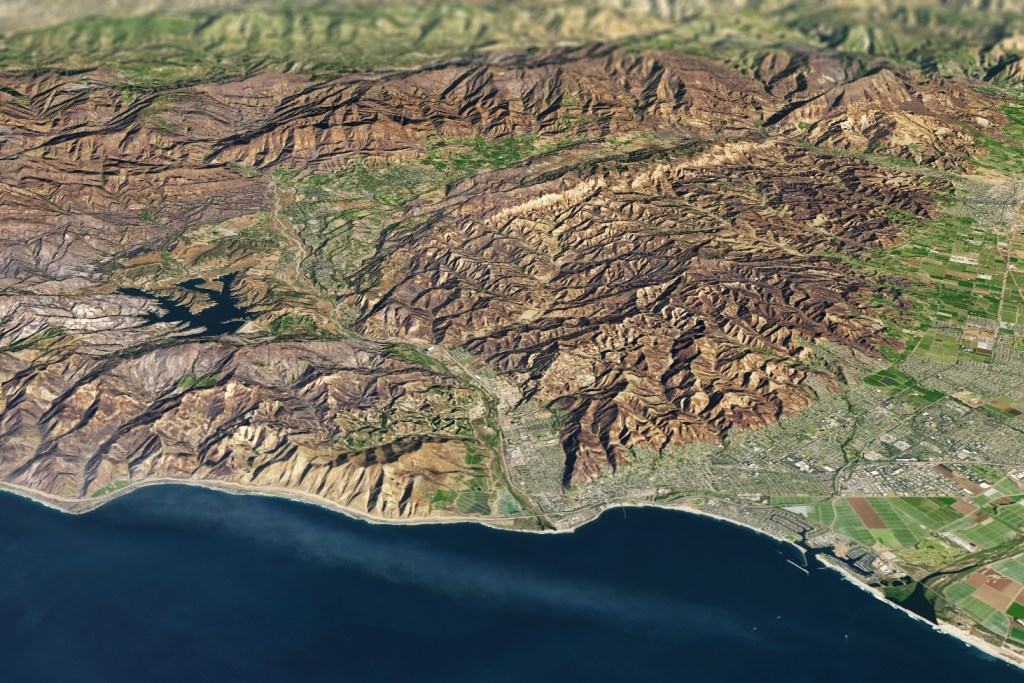
(Photo: Courtesy of the Pacific Institute for Restoration Ecology)
When Sean Anderson and his students first went to check on how California’s largest recorded wildfire was affecting animals, the fire was still burning. It gave the air an unsettling orange glow. “It made a really strange pall,” says Anderson, an ecologist at the California State University–Channel Islands. “My most visceral impression is always the smell. It’s the sour smell of the coastal sage scrub, the chaparral, that’s burned.”
For the last 13 years, Anderson has taken his students out to 55 small study areas in Santa Barbara, Ventura, and Los Angeles counties, to monitor roadkill. The study sites were intended to help them understand how manmade barriers such as roads affect animal life. Now, they were convenient spots to see whether animals were on the move after the Thomas Fire, which burned for more than a month and scorched over 281,000 acres. In addition, the research teams smoothed patches of ground, so they could identify paw prints there later. They set up a website where locals could report animal sightings and upload photographs; as of Monday, about 100 people have done so. And as soon as State Route 33—an old highway that cuts through the mountains in the region—opened, the scientists set up camera traps to photograph animals. The cameras are still there, although the teams might not be able to check them for a while because officials have since closed the highway again. All together, it’s been enough to give Anderson a first approximation for how the wildlife of California’s Central Coast has reacted to the the most devastating fire in generations.

(Photo: Los Padres National Forest)
Among the hardest-hit animal communities seem to be the little guys: rabbits, squirrels, voles. These kinds of animals may have tried to shelter in place, then burned. Their absence is bad news for the native grasslands, which depend on small ground mammals to recycle nutrients into the soil, Anderson says.
Larger animals, including mountain lions, bobcats, and deer, tended to fare better because it’s easier for them to run. The exception were these animals’ young. A 40-pound male bear cub made the local news when it was found with burns all over its body and eventually had to be euthanized. One of Anderson’s former students sent him pictures of a juvenile mountain lion he discovered on his parents’ property, its body roasted at a crouch, as if it were still trying to spring away. That was one of two young mountain lion carcasses Anderson has gotten reports about. But outside of vulnerable populations, a couple of lost lions isn’t cause for too much worry, according to Winston Vickers, a University of California–Davis veterinarian who studies the cats. “Generally the loss of one or two lions in a wildfire in a particular area would not be expected to have a population level effect,” he writes in an email.

(Photo: Courtesy of the Pacific Institute for Restoration Ecology)
While the scorched landscape will recover, Anderson thinks it will be slow to do so, because of the extremes of drought and downpour that California has endured lately—and which may become more frequent with climate change.
“The kind of water that we really need for our vegetative communities, and, in turn, the wildlife, to recover is a little bit of rain, a little bit of mist,” Anderson says. “Instead of this all or nothing.”
Meanwhile, the land has been denuded of vegetation. “It looks like a moonscape,” Anderson says.
What’s all this mean for the future of the green mountains of central California? Judging from data Anderson gathered in the wake of the smaller Springs Fire of 2013—which came close enough to Cal State–Channel Islands to rain embers on campus—the small survivors may have a rough time of it for a while. Without grass and bushes to hide under, they’re easy pickings for predators. Anderson is also concerned about how deer, roaming the bared mountainsides, may further destabilize them, making them even more vulnerable to mudslides in the future.
Lastly, there’s that slow recovery he’s talked about. Although drought conditions have lifted for much of California, the region affected by the Thomas Fire is still in a “moderate” drought, which will make it more difficult for bushes and scrub to grow back. After the Springs Fire, Anderson studied the recovery of an endangered succulent called Dudleya. Where there used to be about 50,000 Dudleya plants, there are now only a few hundred. “We haven’t seen widespread popping back of these species because of the drought,” he says.

(Photo: NASA)
In the years to come, he expects grassy, weedy species to come back more quickly, which, in turn, will encourage “weedier” animals: namely adaptable generalists like coyotes and crows that can survive on lots of types of food, instead of specialists with more specific diets, such as badgers. As California’s human communities work to recover from these disasters, so will their animal neighbors. In a future affected by climate change, it’ll be tough work for all.





